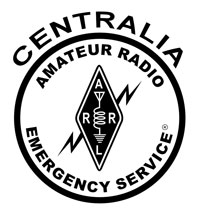 The Pacific Northwest, and in particular, the western half of Washington State is not generally known for its summertime wildfires when compared to other states like California and Oregon. Most people think of our part of Washington State as a lush, green heavily forested area and while that is true, every county has its share of lowland grass or hay fields that become tinder dry when warm summer weather arrives.
The Pacific Northwest, and in particular, the western half of Washington State is not generally known for its summertime wildfires when compared to other states like California and Oregon. Most people think of our part of Washington State as a lush, green heavily forested area and while that is true, every county has its share of lowland grass or hay fields that become tinder dry when warm summer weather arrives.
In Lewis County, there are fifty five fire districts, many of which are rural volunteer stations not manned 24 hours a day. Riverside Fire Authority (RFA) is the largest district in our area with 184 sq. miles and covers the Centralia ARES served agencies. RFA operates out of two main stations with full time personnel as well as several volunteer stations. When summer arrives and the temperatures rise, several weather patterns join to create volatile and dangerous wildfire conditions. Extreme temperatures, high winds, low humidity and lowland topography filled with dry grasses, hay fields and other fuel sources create what is known as “Red Flag” weather conditions which are every fire fighters worst nightmare. When these conditions arrive, the National Weather Service (NWS) puts out Red Flag warnings and local authorities clamp down with burn bans. Wildfires that occur during Red Flag periods are not only dangerous, they can be explosive. Minutes, even seconds count in attacking these fires. While Red Flag warnings usually happen only a few times over the summer, they can last from a few days to a few weeks where everyone is on edge.
In conjunction with Riverside Fire Authority and with approval of Chief Mike Kytta, KG7GQT, Centralia ARES is working to develop a “Red Flag Spotters” program where trained amateur radio operators from our ARES team will volunteer to patrol rural areas of Riverside Fire Authority’s jurisdiction as an extra set of eyes watching for smoke or fires during dangerous Red Flag periods.
For safety purposes, Red Flag spotters will use their own vehicles, complete with at least 50 watt VHF radios connecting to two reliable local repeaters. A designated net control will oversee a minimum of two individual spotters working three and one half hour shifts. The plan is to cover the most dangerous parts of the day from Noon through 7pm. and spotters may drive rural roads or use hilltop locations to park and scan the area with binoculars. Should suspicious smoke or a fire be located, spotters or net control can communicate quickly by phone with an on duty fire supervisor capable of assessing what kind of deployment is needed.
For several years, Centralia ARES has trained to conduct windshield surveys for Riverside Fire ahead of what can be fast moving wildfires. ARES volunteers are watching for dangerous fire brands carried by the hot winds associated with a wildfire. These fire brands can easily start new fires ahead or around the wildfire and identifying the danger and alerting RFA allows for a quick response to the potentially new fire. The Red Flag spotters program is just an extension of our wildfire windshield survey work but we hope to bring just one more level of protection to our served agency and our community.

